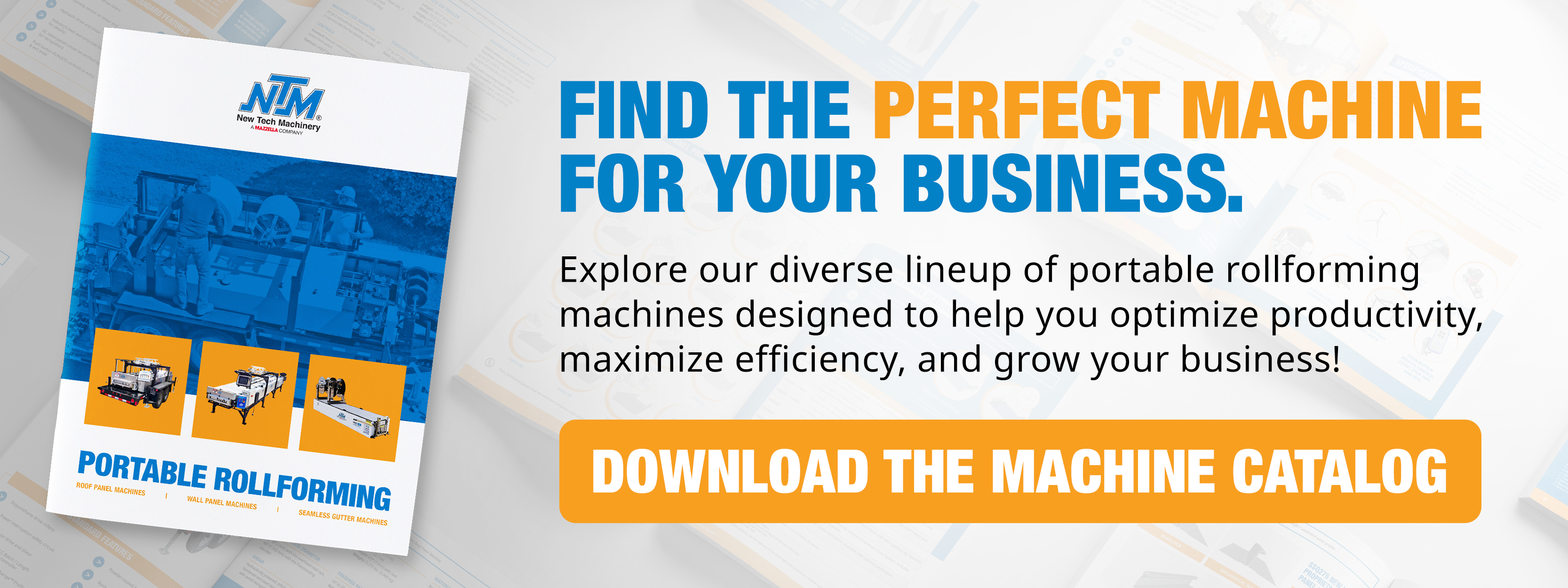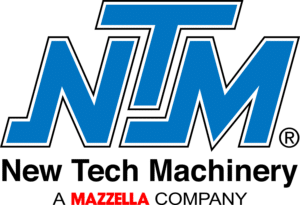The Hidden Risks of Buying a Portable Rollforming Machine
Owning a Portable rollforming machine can increase your production and profits and give you complete control over your metal roofing operation. The arrival of your first portable rollformer is a liberating experience—you’re free from third-party suppliers, waiting on deliveries, worrying about panel damage or order mistakes, and more.
But before you write that check, understand the risks that can turn your investment into a costly mistake. Let’s find out what every roofing contractor needs to know before bringing portable rollforming into your operation and ending up with buyer’s remorse.
In this article, you’ll discover:
- Not All Portable Rollformers Produce All Panels
- The True Cost of a Portable Rollformer
- The Portable Rollforming Training Gap
- Power Problems that Stop Production
- Portable Rollformers & UL Compliance
- Portable Rollforming Site Logistics
- The Portable Rollformer Usage Problem
- Portable Rollformer Maintenance and Support
- Quality Control Blindspots
- The Cash Flow Squeeze
- When Portable Rollforming Makes Sense
- Risk Mitigation Checklist
- FAQs
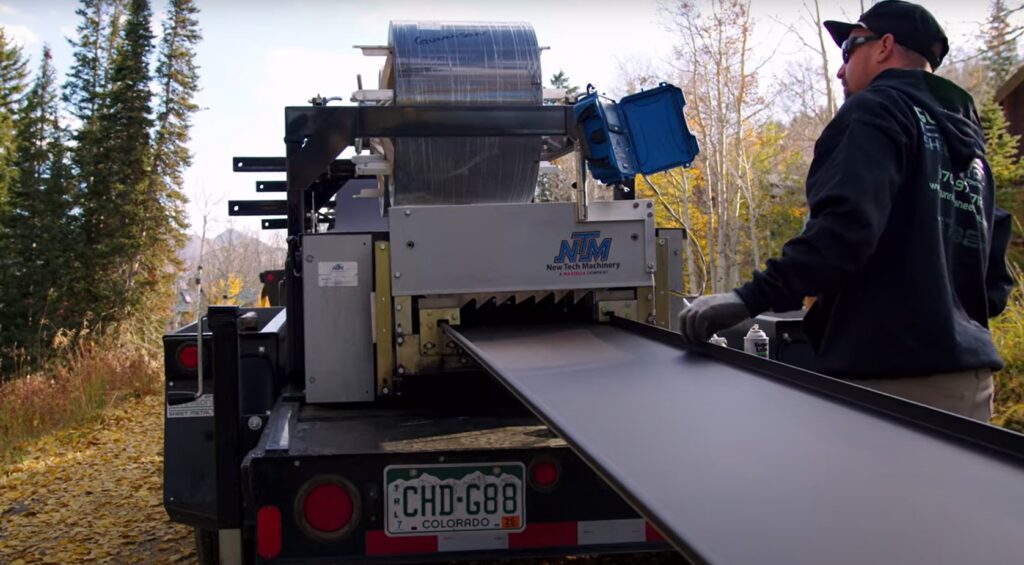
Not All Portable Rollformers Produce Every Panel
New Tech Machinery’s (NTM) SSH™ MultiPro and SSR™ MultiPro Jr. produce seven optional standing seam profiles, while the SSQ II™ MultiPro can run 16 optional profiles. All of these machines probably offer more panel types than you need. The profiles are each sold separately (the choice of one comes with a new machine). This means more investment, so you want to make sure to purchase profiles you’re going to use.
Also, you want to make sure that your machine produces those profiles. Some machine manufacturers make portable rollformers dedicated to a single profile–say, a 2″ snap lock. If you want another profile, you need to purchase another machine! So it’s important to figure out which profiles you want to offer customers, and maybe leave the door cracked open in case you need something you hadn’t anticipated. That’s what makes a multi-profile portable rollformer valuable.
Each job demands a specific profile, whether it’s a 2” mechanical seam, a 1” snap lock with striation, or some other standing seam variation. You won’t do much business if you don’t have popular profiles or sizes for your demographic. Plus, some jobs require specific testing and specs, according to the architect’s requirements or city, state, or regional building ordinances. Not being able to meet the requirements can hurt your business.
The risk: A machine that produces “close enough” profiles can cost you jobs when architects or engineers reject non-conforming panels. Worse, installing out-of-spec panels can void warranties and create liability exposure. If UL testing is required, ensure you get a profile that carries it. And keep in mind, testing is rarely free. For NTM machine owners, Sheffield Metals offers free testing and engineering for most NTM panels.
What to do: First, figure out what profiles you need. Then find the portable rollforming machine that can consistently hit those specs. The SSR MultiPro Jr. and SSH MultiPro offers seven standing seam profiles, which include the most popular. While one residential profile choice is included with the machine, additional profile tooling will cost extra.
The SSQ II MultiPro is a great option if you plan to expand your business. Along with standing seam, it offers a flush wall, soffit, and under deck profile; the SSQ275, a proprietary profile that can be used for both snap lock and mechanical seam; board and batten siding, and more.

The True Cost of a Portable Rollformer
That $65,000-75,000 machine price tag is just the starting point. Add profile tooling sets, powered shears, decoilers, run-out stands, reels, trailers, and training. Many contractors discover their “budget” machine actually costs $80,000-$120,000+ fully equipped, depending on machine and configuration.
The hidden costs:
- Multiple tooling sets for different profiles
- Accessories
- Maintenance (lubricants, cleansers, etc.)
- Insurance and storage costs
- Downtime when business is slow
What to do: Build an ROI model. Include everything from consumables to expected downtime. Compare this to your current material costs and lead times.
The Portable Rollformer Training Gap
Rollforming looks simple—feed coil, push a button, then kick back and watch the panels roll out. In reality, proper setup requires skill and experience. Incorrect roller adjustments, improper coil feeding, or lazy maintenance can create camber, oil-canning, or surface damage.
Common operator errors:
- Rushing setup to “save time”
- Ignoring quality checks
- Failing to make proper adjustments
- Skipping lubrication or maintenance cleaning
What to do: Get training. NTM offers free training to new NTM machine owners at our Aurora, Colorado facility for good reason—it sets our customers up for success. For a fee, our training techs can even come to your location.
Invest in comprehensive training for your crew and don’t depend on yourself or a machine operator to pass the knowledge on to the rest of your employees. Trainers are experts at what they do and will make sure everything is covered, plus answer any questions. They’ll also take your crew members through the correct safety protocol so they can avoid injury when operating the machines.
Besides in-person training, NTM offers downloadable sheets that includes a material usage guide, machine maintenance schedule, safe machine operation procedures, and more. We also have available machine manuals that operators can download onto their electronic devices and refer to out in the field.
NTM’s Learning Center is full of instructional videos and articles on machine operation, including how to make adjustments, tooling changeovers, Document standard operating procedures for setup, changeovers, and quality checks.
On our Service and Support page, you can find information on how to correct common issues, such as gutter hem issues, panel form problems, and controller settings.
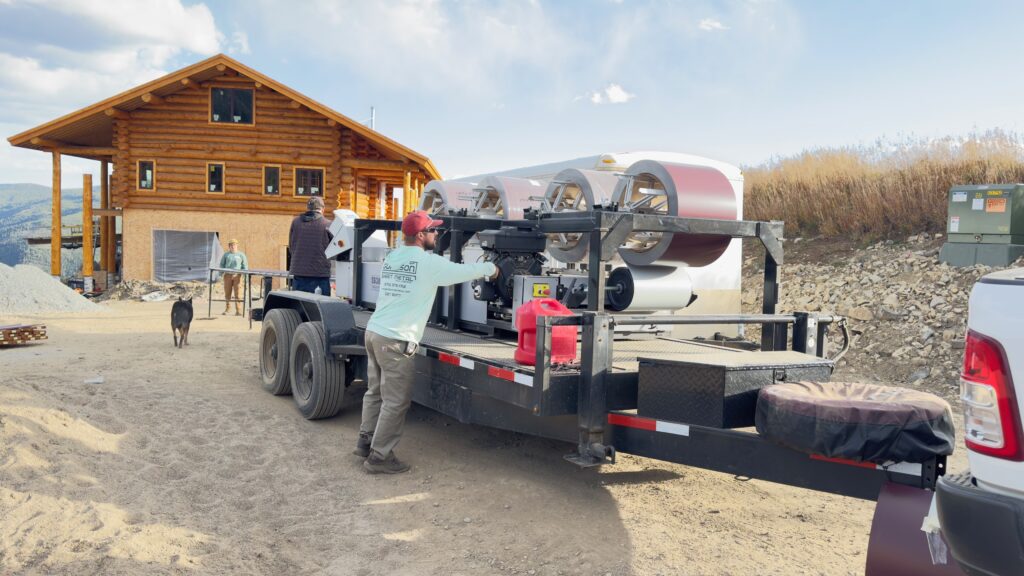
Power Problems That Stop Production
Portable machines need clean, stable power. Undersized generators, voltage drop through long extension cords, or “dirty” jobsite power can trip electronics, cause drive inconsistencies, and produce panels with length variations that won’t fit properly.
The risk: Nothing kills productivity like a machine that won’t run reliably. Generator problems on a Friday afternoon can shut down your weekend work.
What to do: If you’re using a generator, size it properly (typically 1.5x the machine’s rated draw), use appropriate cord gauges, and consider alternate power sources for backup.
Most NTM portable roof panel machines offer our Quick-Change™ power pack for electric or gas power. You can opt for both, which allows you to easily switch between power sources.
Coil Handling Safety Hazards
A 2,000-pound coil of 24-gauge steel can seriously injure or kill someone if it gets away from you. Portable operations often lack proper decoilers, coil restraints, and material handling equipment.
Safety risks:
- Coil runaways during loading/unloading
- Pinch points at drive stations and shears
- Cuts from sharp coil edges
- Back injuries from manual handling
What to do: Invest in proper coil handling equipment—decoilers, storage shelves, and forklifts. Train crews on safe material handling and lockout/tagout procedures. Don’t cut corners on safety equipment.
Portable Rollformers & UL Compliance
Many markets require tested assemblies for structural applications—UL listings, Miami-Dade approvals, or specific wind uplift ratings. If your machine can’t replicate the exact tested profile dimensions, you’re installing non-compliant systems.
NTM portable rollforming machines can produce UL-rated panels. Keep in mind, you’ll still have to have your NTM machine certified for UL ratings as your portable rollformer does not come with that rating. NTM portable rollformers are UL compliant, but they must be UL rated individually by the owners. NTM does not provide UL ratings.
The liability: When a roof fails and investigators trace it back to non-rated panels, you own the problem. Insurance may not cover claims involving unapproved materials or assemblies.
What to do: Verify that your machine and tooling can produce profiles that match your required testing certifications. Keep your documentation up-to-date and maintain job records showing compliance.
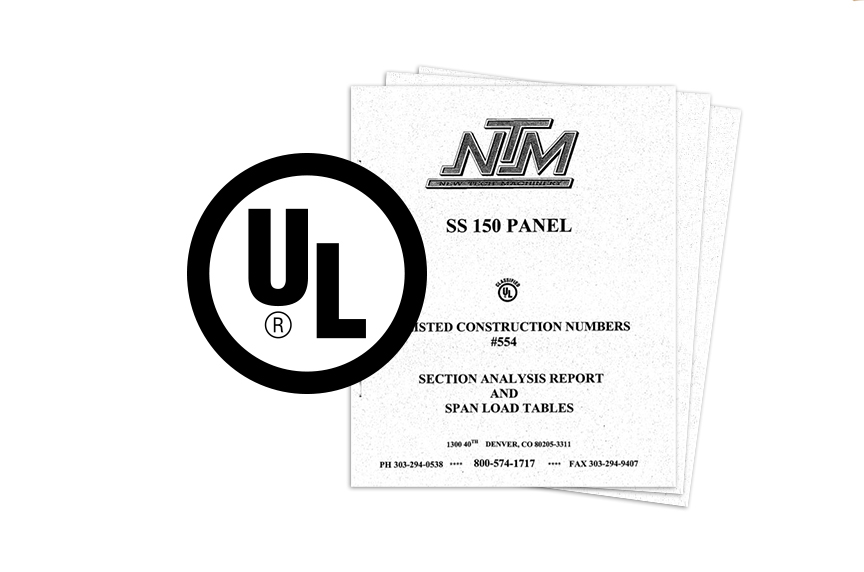
Portable Rollforming Site Logistics
That 40-foot trailer needs 40+ feet of straight, level run-out space. Urban jobsites, tight residential lots, and overhead obstacles can make setup difficult. The weather can add more constraints.
Planning failures:
- Assuming every site can accommodate the trailer and equipment
- Underestimating jobsite time
- Not running test panels or gutters before leaving for the jobsite
What to do: Pre-plan every job for equipment access, staging areas, and run-out space. Have contingency plans for weather delays. Run test panels prior to leaving your shop.
The Portable Rollformer Usage Problem
If your machine sits idle 60% of the time, you might not generate enough revenue to justify the investment. Also, depending on your region, business can fluctuate seasonally. Be prepared for slower periods in the winter and busier summers. You may more than make up for what you lose in one season during the others.
Reality check questions:
- How many linear feet do you actually install per month?
- What’s your seasonal variation?
- Can you make up the difference as a supplier to other contractors?
What to do: Plan conservatively. Include jobsite travel time, setup delays, weather days, and seasonal fluctuations. Consider starting with rental or outsourcing to validate demand.
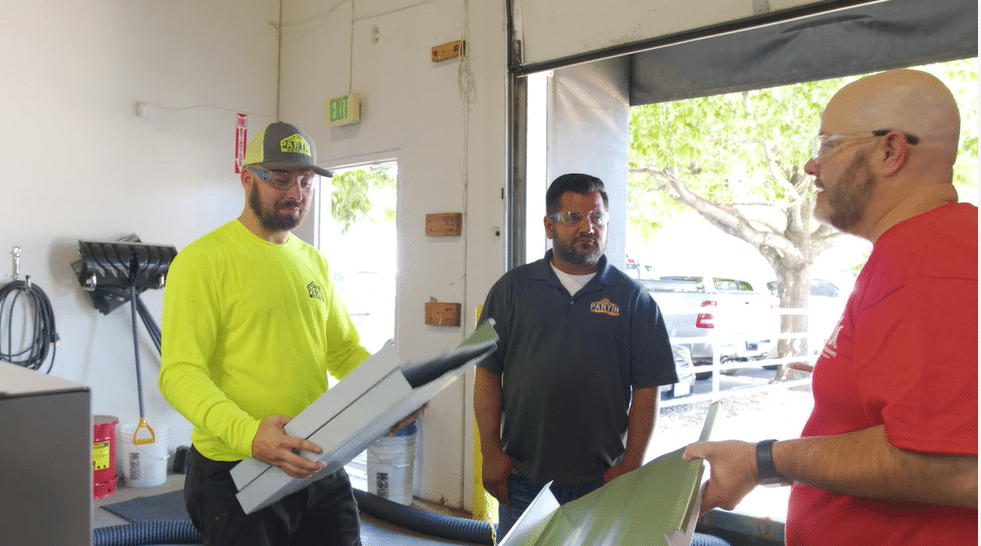
Portable Rollformer Maintenance and Support
When your machine breaks down, how fast can you get parts and service? Some manufacturers have limited parts inventory, slow response times, or no local service network.
Downtime costs:
- Lost production while waiting for parts
- Crew standing time
- Missed delivery commitments
- Emergency outsourcing at premium prices
What to do: Choose manufacturers with proven parts availability and technical support. Ask for average response times and customer references. Consider stocking critical wear parts.
Quality Control Blind Spots
Without proper measurement tools and procedures, you might not catch quality problems until panels are on the roof. Length variations, profile distortion, or finish damage discovered during installation create expensive rework.
Quality risks:
- Inconsistent panel lengths that don’t fit properly
- Panel camber or oil canning
- Dimensional drift over long production runs
What to do: Have inspection procedures, regular quality checks, and proper measurement tools. Document settings and maintain run records for traceability.
The Cash Flow Squeeze
Equipment payments, insurance, storage, and maintenance costs continue whether you’re busy or not. During slow stretches, these fixed costs can strain cash flow.
Financial risks:
- Monthly payments during seasonal downturns
- Capital tied up in equipment
- Insurance and storage costs
What to do: Align financing terms with your cash flow patterns. Consider seasonal payment structures, available through some lenders, or lease options that provide more flexibility. Manufacture panels or gutters for other contractors.
When Portable Rollforming Makes Sense
Despite these risks, portable rollforming offers:
- Total control of your operation
- No reliance on suppliers
- Access to coil at competitive prices
- Increased production and efficiency
- Opportunities to supply other contractors
Risk Mitigation Checklist
Before buying, verify:
- Profiles: Machine can produce your exact specifications
- Volume: Realistic job projections justify the investment
- Training: Comprehensive training on operation, maintenance, and safety procedures
- Support: Reliable parts availability and technical support
- Compliance: Ability to meet all required certifications
- Logistics: You have adequate storage space
- Financing: Payment structure aligns with cash flow
- Safety: Proper material handling and safety equipment
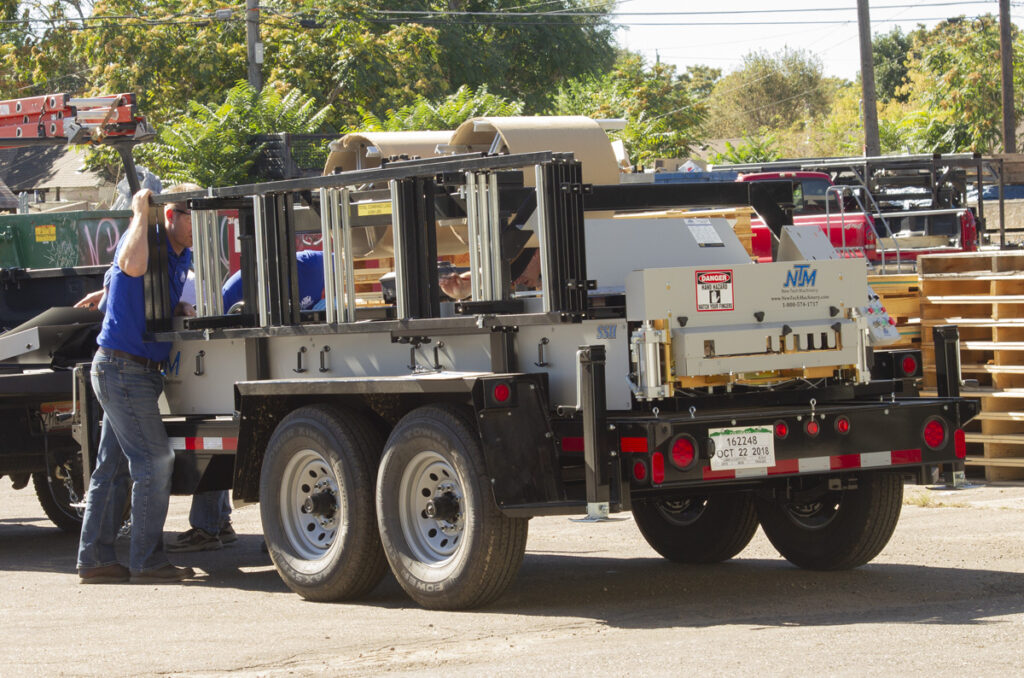
FAQ: The Hidden Risks of Buying a Portable Rollforming Machine
1. Can one machine make all roof panel and gutter profiles?
Answer: No. Not all machines are designed to meet the exact specifications that architects, engineers, and customers require. Using a machine that only produces “close enough” profiles can cost you jobs, void warranties, and create liability issues. Always verify the machine you’re buying can produce the profiles you need—and if UL testing is required, make sure it comes with the appropriate certifications.
2. What is the true cost of a portable rollformer?
Answer: The $65K–$75K base price is just the beginning. Once you add tooling sets, powered shears, decoilers, run-out stands, trailers, training, insurance, and maintenance, the real investment often exceeds $120K. Build a five-year total cost of ownership model so you understand the full financial commitment.
3. Do I really need training if operating the machine looks simple?
Answer: Absolutely. Poor setup or improper adjustments can cause camber, oil-canning, or finish damage. Training ensures your crew knows how to set up, adjust, and maintain the machine safely and correctly. NTM provides comprehensive training—both in Aurora, CO and on-site—with additional resources like manuals, videos, and troubleshooting guides.
4. How important is power supply for these machines?
Answer: Very important. Portable machines require clean, stable power. Undersized generators or improper extension cords can cause your machine to trip or produce bad panels. Always size your generator at least 1.5x the rated draw and consider backup options. NTM offers Quick-Change™ gas/electric power packs to keep you running.
5. What are the main safety risks with coil handling?
Answer: Unsafe handling of 2,000-lb coils can lead to serious injuries, including crush injuries, cuts, or strains. Proper equipment like decoilers, forklifts, and coil restraints is essential. Training on material handling helps reduce risks.
6. How do compliance and testing factor into machine choice?
Answer: Many markets require UL listings, Miami-Dade approvals, or specific wind ratings. If your machine cannot replicate tested profiles exactly, installing panels could put you out of compliance—risking lawsuits, fines, or insurance claims. Ensure your machine and tooling can meet your market’s certifications.
7. What site logistics challenges should I expect?
Answer: Machines often require 40+ feet of straight, level run-out space, which isn’t available on every jobsite. Consider access, staging, weight limits, and overhead obstacles when planning. Pre-run panels before leaving the shop to avoid delays on-site.
8. What if my machine sits idle most of the year?
Answer: Idle time hurts ROI. Evaluate the realistic linear feet you install monthly, factoring in seasonal slowdowns and busy times. Some contractors offset downtime by supplying panels to others in their market. Test your demand with rentals or outsourcing before making the purchase.
9. How reliable is support and maintenance?
Answer: Downtime is expensive. Choose a manufacturer that provides quick access to replacement parts and responsive service. Ask about average response times and consider stocking spare wear parts yourself.
10. How can I maintain consistent quality control?
Answer: Implement first-article inspection, regular panel checks, and keep records of machine settings. Quality control ensures panel lengths, profiles, and finishes remain consistent across jobs, protecting both your reputation and your customers’ satisfaction.
11. What are the financial risks during slow seasons?
Answer: Even if your machine isn’t running, you’ll still be responsible for loan payments, storage, and insurance. Work with lenders who offer seasonal payment structures or consider lease options for more flexibility.
12. When does it make sense to buy a portable rollformer?
Answer: When you have:
- Sufficient demand (volume and profiles)
- Reliable operator training
- A strong quality control system
- Manufacturer support and certified compliance
- Proper safety and logistics planning
If you lack these, outsourcing may still be the smarter option until your business is ready.
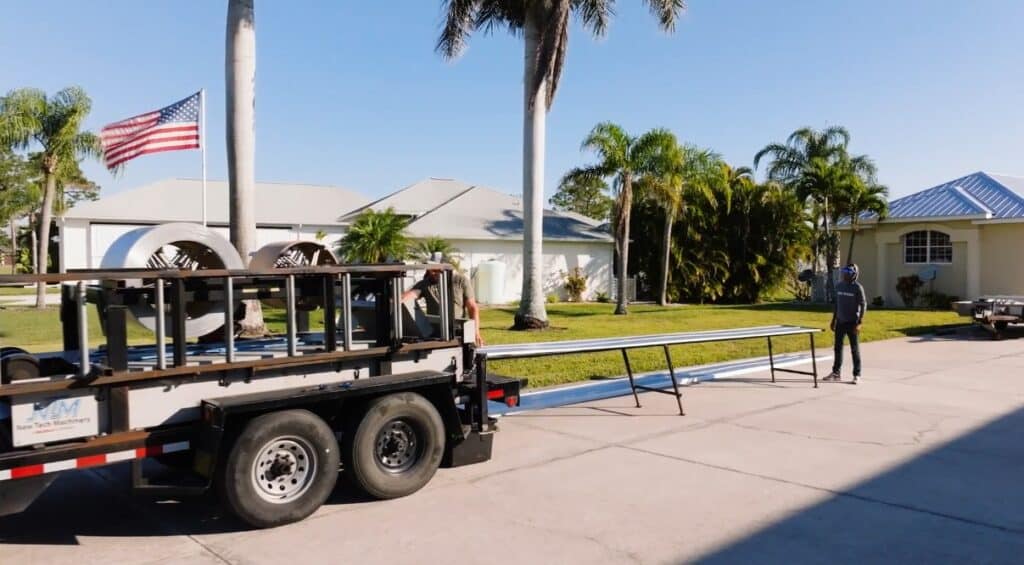
The Bottom Line
Portable rollforming isn’t just about buying a machine—it’s about implementing a complete rollforming operation. Success requires matching the right equipment to your specific needs, investing in training and procedures, and maintaining quality control.
Done right, it can give you competitive advantages in lead times, profit margins, and give you total control of your operations. Done wrong, it becomes an expensive lesson in the difference between owning equipment and running a profitable business.
Take time to honestly assess these risks against your specific situation. The contractors who succeed with portable rollforming are those who plan thoroughly, train properly, and execute consistently. If you’re not ready to commit to that level of discipline, you might be better off sticking with your current suppliers—at least until you are.
For information about NTM portable roof and wall panel or seamless gutter machines and accessories, contact us.
